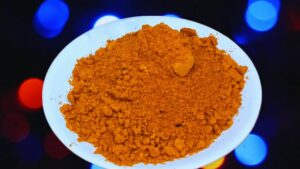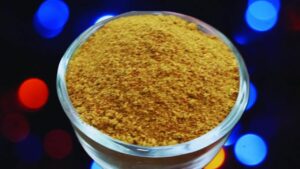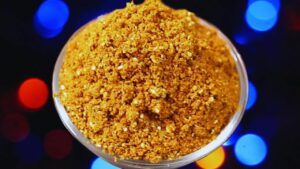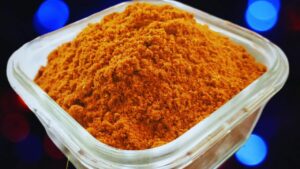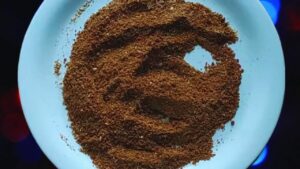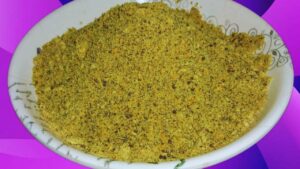Explore the taste and magic of Indian flavors with homemade curry powder.
It is a combination of aromatic spices roasted to perfection to enhance your culinary adventures.
Simply follow the simple steps to create your signature curry powder and elevate the taste of your dishes with spice perfection.
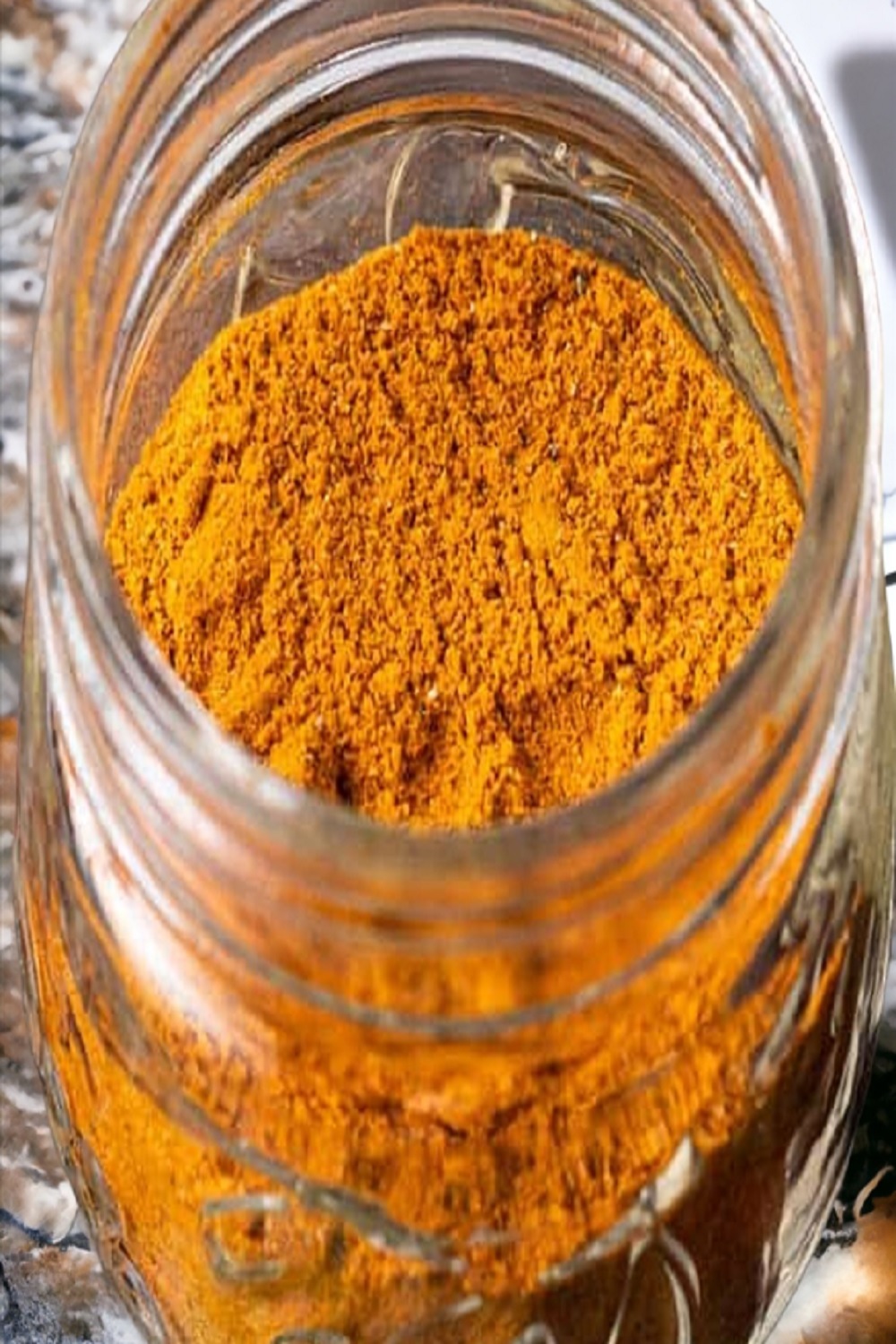
KEY TAKEAWAYS
- Homemade curry powder is a blend of aromatic spices for unbelievable Indian flavors.
- Key ingredients include coriander, mustard seeds, cumin, and turmeric among others.
- Roast and grind these spices to perfection to make your signature curry powder.
- Use fresh spices, roast slowly, and experiment with proportions for the best results.
- Curry powder spices up curries, rice, soups, veggies, and more, adding a delicious kick to your dishes.
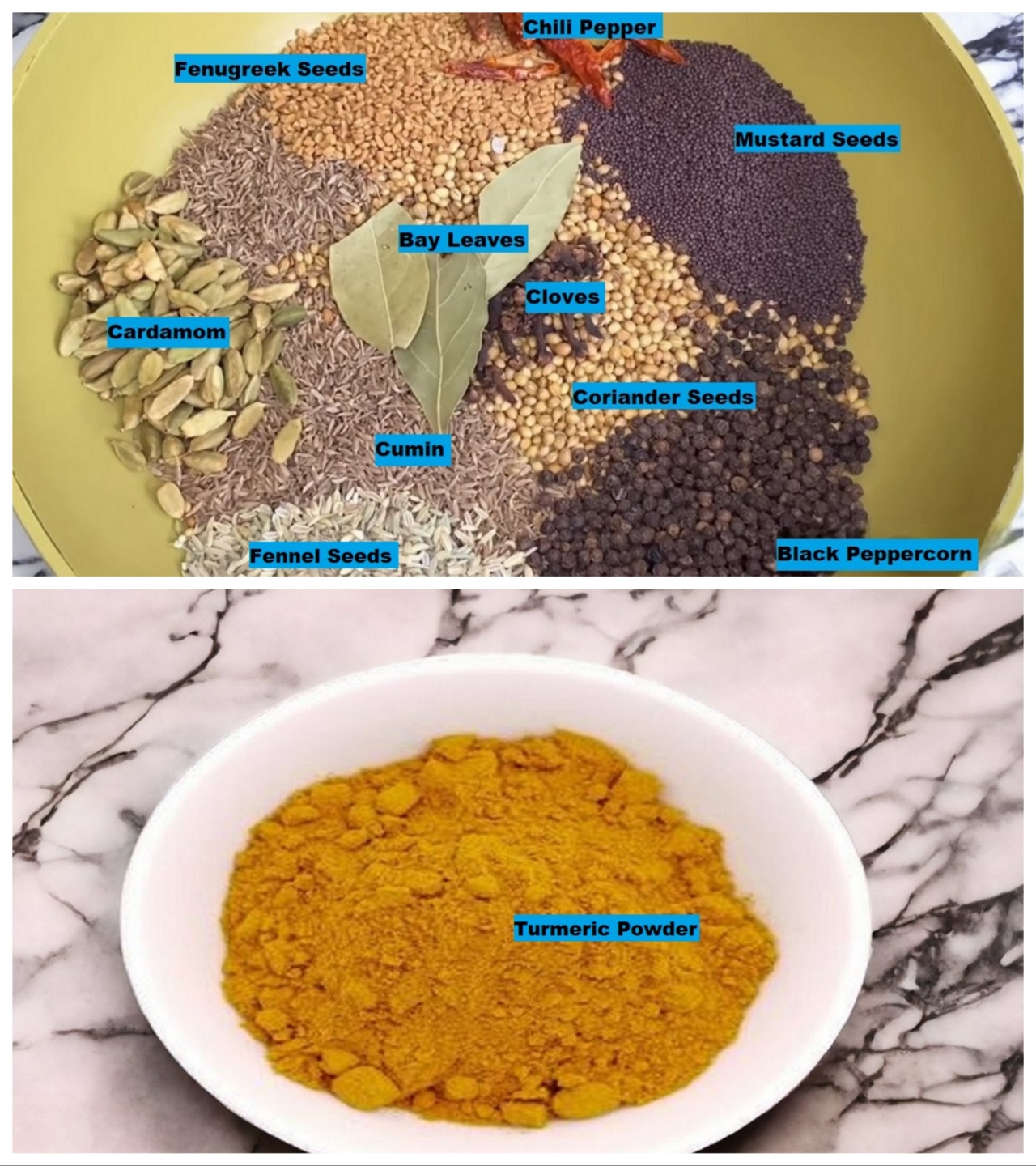
How to Make Homemade Curry Powder? (Step by Step Images)
Step 1. Heat a pan or skillet on the stove and add ½ cup of coriander seeds, 4 tbsp of mustard seeds, 4 tbsp of cumin seeds, 2 tbsp of fenugreek seeds, 2 tbsp of green cardamom pods, 4 tbsp of black peppercorn, 3 bay leaves, ½ cup fennel seeds, 4 chili pepper, and 1 tbsp of cloves.
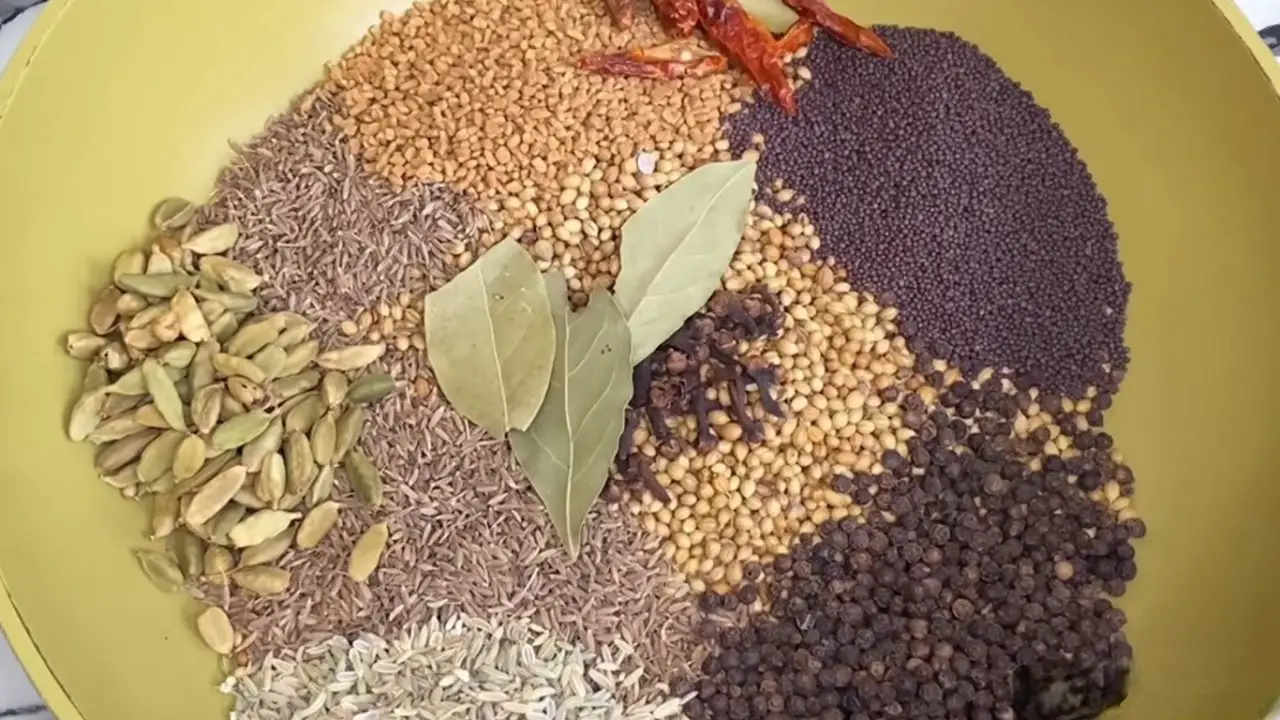
Step 2. Stir continuously for about 3 to 4 minutes to roast them nicely on low heat until mild brown.

Step 3. Pour the roasted ingredients into a tray, spread the content, and let it cool off.

Step 4. When it is cool, pour the ingredients into a blender and grind it nicely.

Step 5. Pour the powder into a bowl and stir it to break the lumps, if any.

Step 6. Now, add ½ cup turmeric powder to the ground mixture and mix them well.

Step 8 (Optional). Pour the mixture into a metal strainer if you want a finer powder, or leave it as it is if you like a bit of coarser powder.
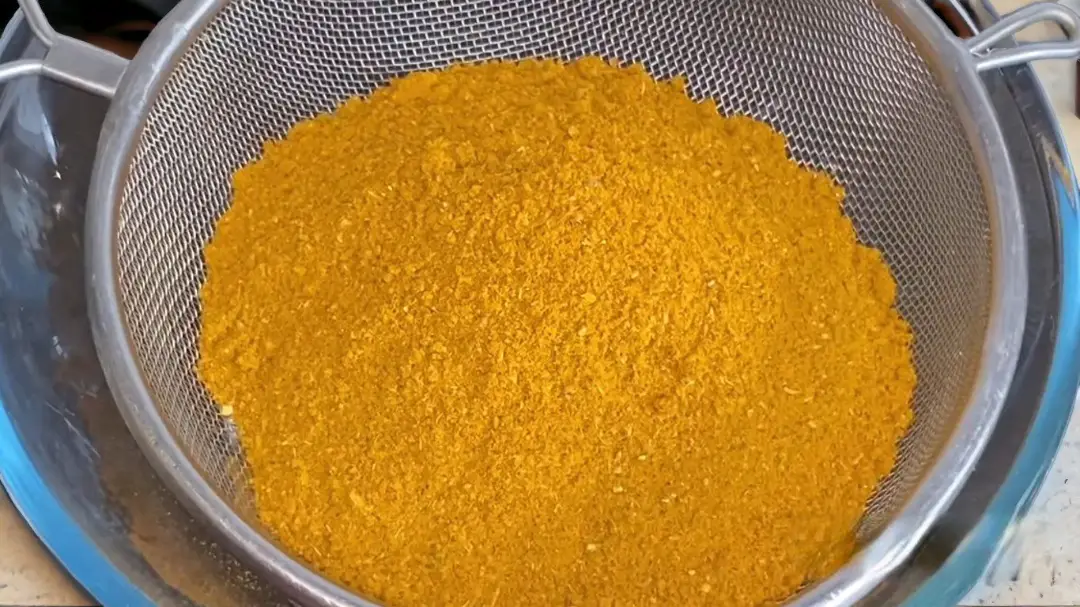
Step 9. Grind the residual husk again and mix them or discard them.

Step 10. Your homemade curry powder is ready.

Pro Tips for Making Homemade Curry Powder
Freshness Matters: Make sure that you use fresh spices for the most vibrant flavors. Consider buying whole spices and roast and grind them just before use.
Low and Slow Roasting: Take your time when roasting the whole spices. Low heat and patience are key. A mild browning is your aim for that perfect aroma.
Cool it Completely: Allow the roasted spices to cool completely before grinding. This preserves the essential oils and flavors.
Texture Control: To achieve your preferred texture, use a metal sieve for a finer powder, or keep it coarser if you like a rustic touch.
Use the Residual Husk: Don’t waste those precious remnants in the grinder; grind them again or use them as a flavorful addition to your dishes.
Balancing Act: Adjust the proportions of spices to suit your taste. Feel free to experiment to create your signature curry powder.
Storing Homemade Curry Powder
Storing homemade curry powder properly is crucial for preserving its freshness and flavors. Here are some essential tips:
Airtight Container: Transfer the homemade curry powder to an airtight container once it has completely cooled down after preparation. Choose a clean, dry glass or plastic container with a tight-sealing lid to prevent air and moisture from entering.
Cool, Dry Location: Store the sealed container of curry powder in a cool, dry, and dark place away from direct sunlight, heat sources, and moisture. Cupboards or pantry shelves are suitable locations. Exposure to light, heat, and humidity can degrade the quality and potency of the spices.
Labeling and Dating: Label the container with the date of preparation and the name of the spice blend. This helps you track its freshness and prevents confusion if you have multiple spice mixes.
Avoiding Contamination: Always use a clean, dry spoon or spice scoop when removing curry powder from the container. This prevents moisture or foreign particles from getting inside, which could reduce the quality and shelf life of the spice blend.
Avoid Refrigeration: It’s best not to store homemade curry powder in the refrigerator as the fluctuating temperatures and moisture can lead to condensation, affecting the quality of the spices.
Avoid Frequent Opening: Limit opening the container unnecessarily. Exposure to air can cause the spices to lose their aroma and potency over time. Instead, scoop out the needed amount and promptly seal the container.
Avoid Bulk Storage: If you’ve prepared a large quantity, consider dividing it into smaller portions for regular use. This prevents frequent exposure to air and helps maintain the freshness of the remaining spice blend.
Regular Checks: Periodically check the stored curry powder for any signs of clumping, discoloration, or loss of aroma. If the spices seem less potent or show signs of moisture, consider making a fresh batch.
By following these storage tips, you can extend the shelf life and preserve the flavors of your homemade curry powder, ensuring that it remains fresh and aromatic for an extended period.
How Does Homemade Curry Powder Taste?
Warm and Earthy: A cozy warmth with earthy undertones that envelop your taste buds.
Subtly Bitter: A delicate touch of bitterness that adds intrigue to each bite.
Spicy Kick: A fiery kick from the black peppercorns and chili peppers for those who crave a bit of heat.
Fragrant Embrace: A fragrant hug from the green cardamom pods and bay leaves that lingers.
Sweet and Savory: A perfect balance between the sweetness of fennel seeds and the savory notes of cumin.
A Hint of Spice: A subtle sharpness from cloves that complements the overall profile.
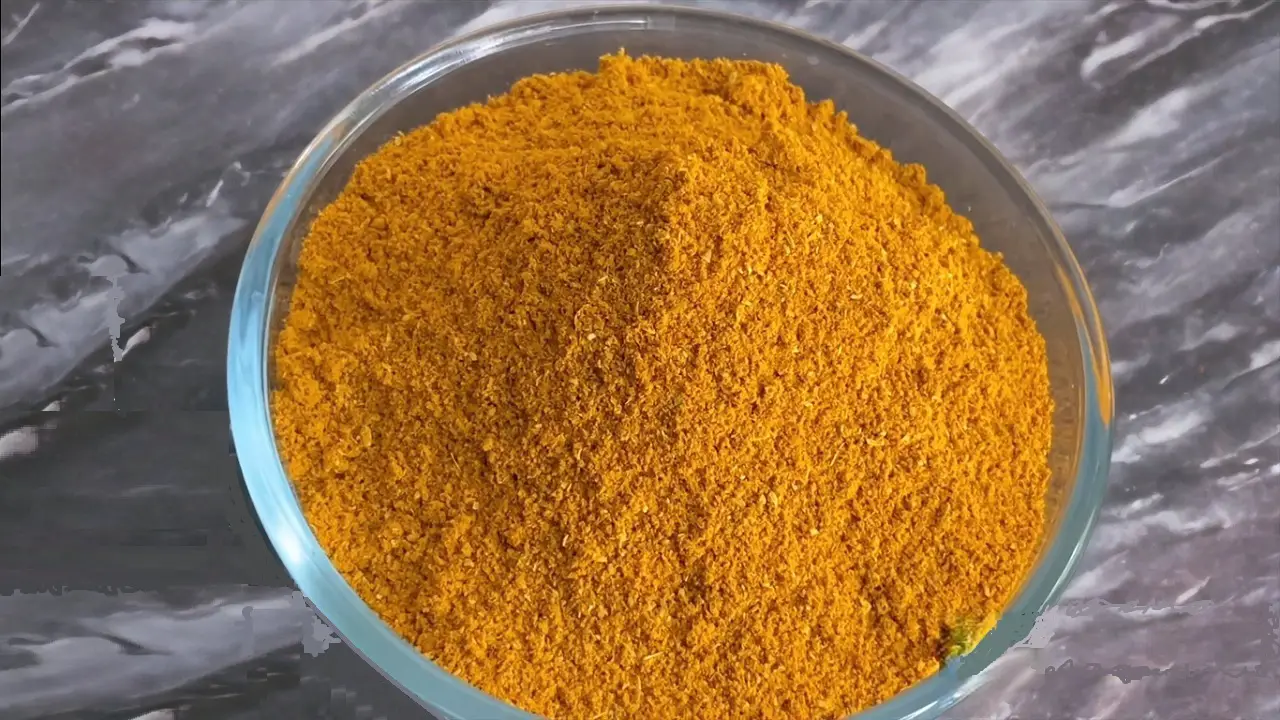
Alternatives of Curry Powder
Garam Masala Powder: This aromatic spice blend shares some similarities with curry powder and can be a suitable substitute.
Turmeric and Cumin Blend: Mix turmeric and cumin in equal parts to achieve a basic curry flavor.
Coriander and Cumin Blend: Combine ground coriander and cumin for a milder curry-like seasoning.
Cajun Seasoning: It has a similar spicy and earthy flavor profile, although it might be a bit spicier.
Berbere Spice: An Ethiopian spice blend with complex flavors, which can be used to add depth to your dishes.
Chili Powder: While not the same, chili powder can add a hint of spiciness and color to your dishes.
What Dishes Can Curry Powder be Used in?
Curries: Naturally, curry powder shines in all types of curries, whether they feature meat, poultry, seafood, or vegetables.
Rice Dishes: Season your rice with curry powder for fragrant and flavorful pilaf, fried rice, or biryani.
Soups and Stews: Add a pinch of curry powder to your favorite soups and stews for an extra layer of complexity.
Roasted Vegetables: Toss your choice of veggies in a blend of oil and curry powder before roasting for a delightful side dish.
Dips and Sauces: Mix curry powder into yogurt-based dips or creamy sauces to create a unique flavor profile.
Chicken or Tofu Marinades: Use it to marinate chicken, tofu, or other proteins before grilling or baking.
Scrambled Eggs: Elevate your breakfast game by adding a dash of curry powder to your scrambled eggs or omelets.
Homemade Burgers: Mix curry powder into your burger patties for a unique and tasty twist.
Popcorn Seasoning: Sprinkle curry powder on your popcorn for an exciting and exotic movie night snack.
Potato Dishes: Whether it’s mashed potatoes, potato wedges, or hash browns, curry powder can transform these into something special.
Noodle or Pasta Dishes: Stir it into your noodle or pasta dishes for an unexpected flavor adventure.
Grilled Meats: Season your grilled meats with a mix of curry powder for a fusion of flavors.
Recipe Card

Homemade Curry Powder Recipe | Indian Curry Powder
Ingredients
- ½ cup Coriander seeds
- 4 tbsp Mustard seeds
- 4 tbsp Cumin seeds
- 2 tbsp Fenugreek seeds
- 2 tbsp Green cardamom
- 4 tbsp Black pepper
- 3 pieces Bay leaves
- ½ cups Fennel seeds
- 5 pieces Chili pepper
- 1 tbsp Cloves
- ½ cup Turmeric powder
Instructions
- Toast the SpicesHeat a pan on low heat and add these spices: ½ cup coriander seeds, 4 tbsp mustard seeds, 4 tbsp cumin seeds, 2 tbsp fenugreek seeds, 2 tbsp green cardamom pods, 4 tbsp black peppercorns, 3 bay leaves, ½ cup fennel seeds, 4 chili peppers, and 1 tbsp cloves.
- Roast the SpicesStir the spices continuously for about 3 to 4 minutes until they turn lightly brown and release a fragrant aroma. Keep the heat low to prevent burning.
- Cool and Prepare for GrindingTransfer the roasted spices onto a tray to cool. Spread them out evenly and let them cool down completely.
- Grind the SpicesOnce the spices are cooled, put them into a blender and grind them until you get a fine powder.
- Break Lumps and Add TurmericPour the ground spice mix into a bowl and stir it to break any lumps that may have formed. Then, add ½ cup of turmeric powder to the mix and blend them well.
- Strain for Finer Texture (Optional)For a finer powder, strain the mixture through a metal strainer. If you prefer a slightly coarse texture, you can skip this step.
- Re-grind or Discard Residual HuskIf there's any leftover husk in the grinder, you can grind it again for a smoother texture or discard it if you prefer.
- Your Homemade Curry Powder Is Ready!Store your freshly made curry powder in an airtight container for future use in enhancing the flavors of your dishes.
Notes
Nutrition Info (Estimation Only)
Conclusion
Homemade curry powder is the ticket to the magic of Indian flavors.
Roast and grind aromatic spices to create your signature blend, and use it to enhance a wide range of dishes from curries to roasted veggies.
All it needs is just a sprinkle!

